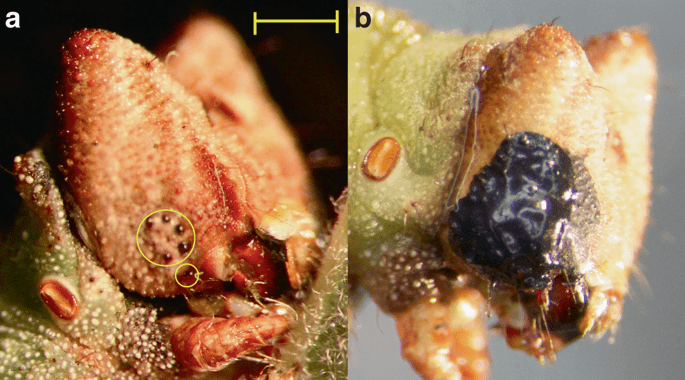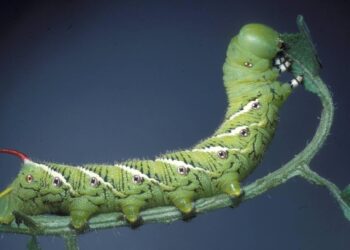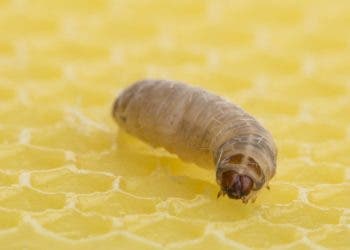Although not as famous as chameleons, caterpillars of the peppered moth (Biston betularia) are quite the masters of camouflage themselves. The insect not only resembles the shape of the twigs it rests on but also variably matches their color, ranging from a reddy brown to green. For more than a century, naturalists have tried to explain how these caterpillars manage to change color to blend in their environment. A new study may have finally unraveled the mystery, showing that the insects can “see” a twig’s color with their skin.

Blindfolded caterpillars
Researchers at the Max Planck Institute for Chemical Ecology in Germany and Liverpool University in the UK conducted three experiments to solve the riddle of how caterpillars of the peppered moth perform their disguise. First, they wanted to see if eyesight was essential to the insects’ camouflage. S, they “blindfolded” several of them by painting their eyes over with black acrylic paint. These blindfolded caterpillars were placed on white, green, brown, and black branches. Remarkably, despite not being able to see, the insects were still able to change color in order to resemble their background to the same extent as individuals that didn’t have their eyes covered.
“It was completely surprising to me that blindfolded caterpillars are still able to pick a branch that best matches their color. I don’t think my supervisor, Ilik Saccheri, believed me until he saw it by himself”, said Amy Eacock, lead author of the new study and currently a postdoc at the Max Planck Institute for Chemical Ecology, said in a statement.

In a second experiment, the researchers analyzed how blindfolded caterpillars reacted to their environments. When allowed to move freely, the caterpillars consistently rested on the twig that most matched their own color.
While these two experiments convincingly offered evidence that the caterpillars of the peppered moth are capable of sensing the color of vegetation through other means other than eyesight, a third experiment showed how all of this is possible. The researchers examined where genes related to vision are expressed inside the insects’ bodies, finding them not only in the head, where the eyes rest, but also in the skin. One particular gene related to vision was expressed more in the skin than in the heads of the caterpillars. Writing in their journal Nature Communications, the authors believe that it is this gene that may be largely responsible for the caterpillars’ surprising color-perception by the skin.
Finally, the researchers performed a computational model of visual perception to quantify larval color and luminance as it would be perceived by a visually hunting avian predator, the blue tit. The results suggest that there’s no difference in how birds see blindfolded and unblindfolded caterpillars.
“We constructed a computer model that can ‘see’ the same way birds do, so we are able to conclude that these adaptations – color change, twig-mimicking, behavioral background-matching – likely evolved to avoid visual detection by predators,” Amy Eacock said.






